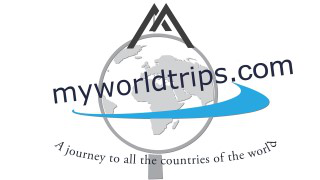This trip started back home in Belgium at the Cameroon Embassy in Brussels.

The moment I stepped into the Cameroon Embassy in Brussels, I knew something was not right. The air felt thick—lot’s of people…A way too friendly guy just needed 200€ and he should arrange everything. I handed over my documents, ready to pay the standard fee for my tourist visa. The official, a man with slicked-back hair and a fake-friendly smirk, leaned in, voice low. “It’s going to cost more than you expected,” he said, scribbling an absurd number onto a scrap of paper.My pulse spiked, but I didn’t flinch. I stared him down, my silence cutting sharper than words. He waited, expecting me to fold, to obey.Not a chance.I took my papers and walked out, but I didn’t just leave—I made sure the right people heard about his scheme. I reported everything, every detail, every trick. A week later, I returned, shoulders squared, ready for whatever came next.He was there. But this time? No games, no smirk. Just a stiff nod as he slid my passport across the desk. My visa was stamped, legitimate, no extra fees, no nonsense.I had won. As I stepped outside, breathing in the crisp Brussels air, I knew one thing—he wouldn’t try that again.

Time to start my adventure, my trip though Cameroon. My guide and fixer came to pick me up at the Airport ….the start of two unforgettable weeks, I had the incredible opportunity to explore the wonders of Cameroon — often called “Africa in miniature” due to its geographical and cultural diversity. With the support of a private guide and driver, I ventured through everything from lush rainforests and serene beaches to rugged mountains and vibrant cities. What I discovered was a country pulsing with life, a rich mosaic of cultures, history, and landscapes that tell the story of Africa in all its grandeur.
Here are some of the places i have visited:
Yaoundé
My journey began in Yaoundé, a city built across seven hills. Though often overshadowed by Douala, Yaoundé’s leafy boulevards, museums, and colonial-era architecture offer a peaceful introduction to Cameroonian life.


Douala
Douala, with its bustling streets and dynamic energy, is Cameroon’s economic heartbeat.

Kribi – Tropical Paradise by the Sea

- Ekom Waterfalls, : A natural spectacle.


- Pygmy villages offer cultural insights into Cameroon’s indigenous peoples.

- Bafoussam – The capital of the West Region, known for its vibrant markets, rich traditions…

- Bandjoun Palace – A historical and cultural gem showcasing the traditions of the Bamileke people, with intricate architecture and royal artifacts.


- Foumban Royal Palace & Museum – A deep dive into the Bamoun kingdom’s history, featuring ancient relics, art, and royal treasures.

- Bandjoun Market – A bustling marketplace where you can experience local crafts, traditional foods, and the vibrant energy of the region.





- Traditional Bamileke Chiefdoms – Explore the rich heritage of the Bamileke people through their impressive chiefdoms and cultural ceremonies.


Cameroon’s Cultural Mosaic
Cameroon is home to over 250 ethnic groups, and this diversity is visible in its languages, attire, music, and festivals. From the Fang and Beti in the south, to the Fulani in the north, each group contributes to a living, breathing cultural landscape.
You’ll hear French and English, the official languages, alongside a patchwork of local dialects. This dual colonial heritage (French and British) is evident in daily life — from signage and cuisine to educational systems.


Conclusion
Cameroon is a country that defies simplistic definitions. It is at once modern and traditional, Francophone and Anglophone, coastal and mountainous. Its welcoming people, breathtaking landscapes, and rich cultures left a deep impression on me.
For travelers seeking a truly diverse African experience — one that offers beach relaxation, rainforest trekking, cultural depth, and big-game safaris — Cameroon delivers all this and more.
